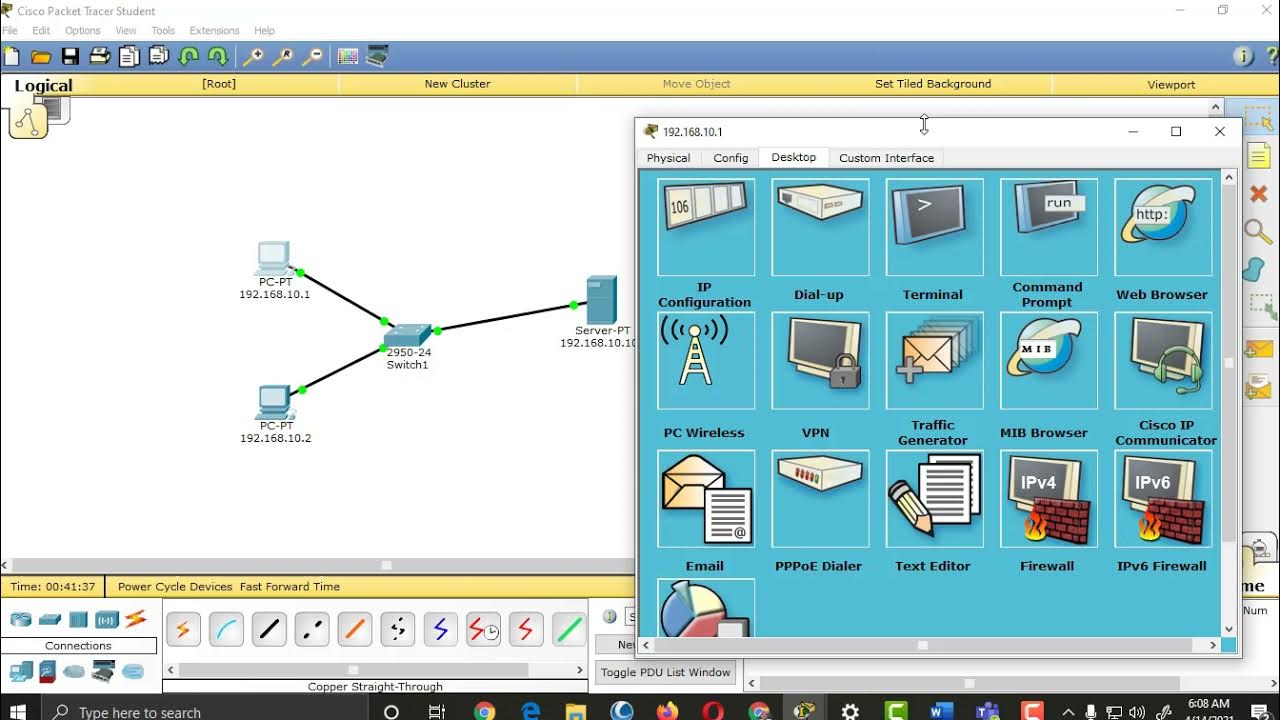AKM Awal
Summary
TLDRThis video explains the fundamentals of network operating systems (NOS), their role in managing network services between host and client computers. It covers the evolution from manual file sharing to network-based data access, increasing efficiency and speed. Different types of network operating systems are explored based on scale, function, and graphical interfaces (GUI vs. command line). The video also discusses open-source and closed-source operating systems, and highlights key features of a NOS, such as control of network resources, secure access, and data backup, aimed at improving network efficiency and user experience.
Takeaways
- 😀 The network operating system (NOS) is essential for handling network services between host and client computers, enabling communication and resource sharing.
- 😀 Network services provide convenience to clients, such as file sharing, which can streamline data access within a network.
- 😀 Traditional methods of data transfer (e.g., using flash drives) are inefficient when accessing multiple files, which highlights the need for a network operating system.
- 😀 A server computer can store data centrally, allowing client computers to access it quickly and efficiently, reducing manual data retrieval processes.
- 😀 Network operating systems are categorized based on scale (e.g., personal, local, metropolitan, wide area networks) and function (e.g., client, server).
- 😀 A client-server network involves a clear distinction between client computers and server computers, whereas a peer-to-peer network allows computers to function as both clients and servers.
- 😀 The network operating system can be graphical (GUI) or text-based (CLI), with GUI systems providing a user-friendly interface and CLI systems being more suitable for low-scale setups.
- 😀 Open-source network operating systems, like Linux (Debian, CentOS, Ubuntu), are free and allow for customization, while closed-source systems (e.g., Windows Server) are proprietary and require payment.
- 😀 Network operating systems must include key features like centralized control, secure access, remote user connectivity, and data backup.
- 😀 The general characteristics of a network operating system include resource control, secure access, remote user support, and data backup capabilities to ensure business continuity.
Q & A
What is a Network Operating System (NOS)?
-A Network Operating System (NOS) is a system used to manage network services between a host (server) and client computers, allowing for file sharing, secure access, and remote connectivity within a network.
Why was a network operating system needed for Rara and Jaka's company?
-Before implementing a NOS, Rara and Jaka's company had inefficient data retrieval processes, where files had to be manually requested and transferred using external storage. The NOS streamlined this process by centralizing data storage on a server, improving speed and efficiency.
How does a network operating system improve file sharing efficiency?
-A NOS improves file sharing by allowing client computers to access files stored on a central server, reducing the time and effort needed for manual file requests and transfers, which was previously inefficient.
What are the main types of network operating systems based on scale?
-Network operating systems can be classified based on scale into four categories: Personal Area Networks (PAN), Local Area Networks (LAN), Metropolitan Area Networks (MAN), and Wide Area Networks (WAN).
What is the difference between a client network operating system and a server network operating system?
-A client network operating system is designed for client computers, enabling them to access and interact with network services. A server network operating system is designed for server computers, which manage and provide network services to clients.
What is the role of a peer-to-peer network in a network operating system?
-In a peer-to-peer network, all computers can act as both clients and servers, allowing them to directly share resources with each other without relying on a dedicated server.
How does the command line interface (CLI) differ from the graphical user interface (GUI) in a network operating system?
-A CLI is text-based and used in smaller-scale systems, requiring commands to be typed by the user. In contrast, a GUI displays images and allows interaction through graphical elements like icons and buttons, offering a more user-friendly experience.
What is the benefit of using an open-source operating system in a network environment?
-Open-source operating systems are free to use and allow users to modify and develop the code, providing flexibility, cost savings, and the ability to customize the system based on specific needs.
What makes a closed-source operating system different from an open-source one?
-Closed-source operating systems are proprietary and kept secret by the developer company. They are usually exclusive, meaning only the company can develop and update the system, and they are often paid products.
What are the general characteristics of a network operating system?
-The general characteristics of a network operating system include a control center for network resources, secure access, remote connectivity, integration with external networks, and data backup and recovery features.
Outlines

This section is available to paid users only. Please upgrade to access this part.
Upgrade NowMindmap

This section is available to paid users only. Please upgrade to access this part.
Upgrade NowKeywords

This section is available to paid users only. Please upgrade to access this part.
Upgrade NowHighlights

This section is available to paid users only. Please upgrade to access this part.
Upgrade NowTranscripts

This section is available to paid users only. Please upgrade to access this part.
Upgrade NowBrowse More Related Video

Lima Tipe Computing Environment - Operating Systems + Teks Bahasa, Mudah Dipahami

Network Application, Client-Server & Peer-to-Peer P2P Architecture, Socket, Transport layer services

INFORMATIKA KELAS X - SISTEM OPERASI - SISTEM KOMPUTER#kurikulummerdeka

Mengenal Sistem Operasi Komputer

Setting up HTTP, DNS, FTP and DHCP Server Services in Packet Tracer

What is Token Ring Network?
5.0 / 5 (0 votes)